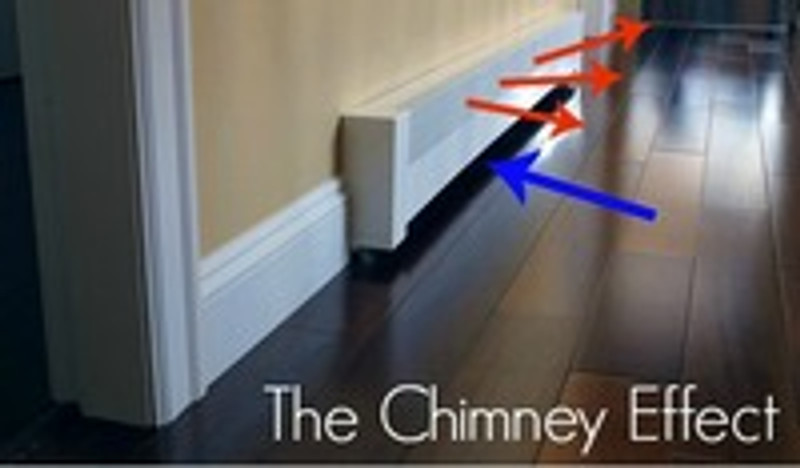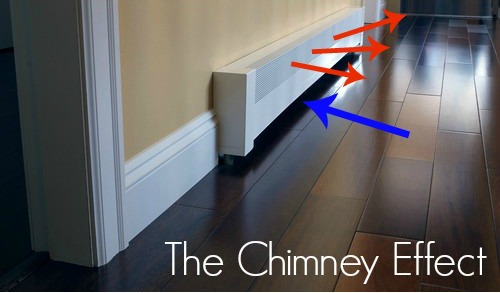Thinking of covering up your ugly baseboard heaters with drapes or hiding them behind a couch or bookshelf? You might want to reconsider.
The stack effect (also called chimney effect) involves airflow into and out of a building caused by incoming and outgoing air temperature differences. This involves a natural convection which operates on a key principle of physics: hot air is less dense than cold air and hence air pressure exerts an upwards force. In layman’s terms: hot air rises and cold air falls. You’ve probably experienced this before if you’ve ever been in a large apartment building where the upper floors tend to be much warmer than the lower ones, or perhaps you’ve noticed your basement tends to be a lot cooler than the upstairs.
A baseboard heater works in much the same way, by generating heat from the ground up. Baseboard needs some ‘chimney effect’ to have the air enter the bottom of the cover and rise through. The hot air rises upwards as cold air is pulled down and reheated.This means that when cold air at floor level comes into contact with the heating element (such as the slanted heat element in your baseboard heater), it becomes warm. Air from the entire room follows in a completely silent, gentle flow. The result is a stable, even temperature. Baseboard heaters offer exceptional heat conductivity transferring as much heat possible to the greatest volume of air.
One of the main advantages of baseboard heaters is that they allow each room to be controlled independently, allowing you to set lower temperatures in rooms that are less frequently used, turning into lower energy costs to you.
When baseboard heaters are trapped in a small space, like tucked behind a shelf or a couch for example, the heating effect will be lost because the cold air flow to the unit is restricted making the output of hot air limited. So while you may have your baseboard heaters turned on, you’re actually wasting potential heat (and money!) without optimum airflow.
The number one rule is proper airflow around the finned tube element; if the airflow is restricted on either the bottom (air in) or near the top (heated air out), you’re in trouble. So before you try covering up that ugly baseboard heater with a piece of furniture you might want to consider a new cover instead–which will end up saving you money in the long run.


